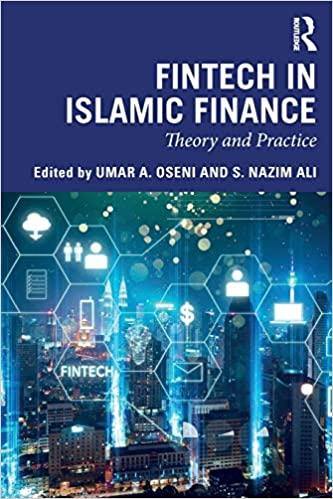Question
Jan wants to include four different stocks in her portfolio. She calls these stocks stock A, stock B, stock C, and stock D. She wants
Jan wants to include four different stocks in her portfolio. She calls these stocks stock A, stock B, stock C, and stock D. She wants to invest 40% of her money in Stock A, 20% in Stock B, 10% in Stock C, and 30% in Stock D.
She has estimated each stocks expected return for the next year under different scenarios. Her first scenario is a recession. She thinks that there is a 15% chance of a recession next year. If a recession happens, she thinks that the returns on stocks A, B, C, and D will be 10%, -3%, 0%, and 2%, respectively, next year.
Her second scenario is a normal economy (where the economy is flat). She sees a 40% chance of a normal economy next year. She thinks that, under a normal economy, the returns on stocks A, B, C, and D will be 15%, 12%, 9%, and 7%, respectively, next year.
Her third scenario is an expansion in the economy. She sees a 45% chance of an expanding economy next year. She thinks that, under this scenario, the returns on stocks A, B, C, and D will be 20%, 15%, 12%, and 8%, respectively, next year.
She has prepared a table that summarizes these estimates. The table is shown below.
| State | Probability | A B | C | D |
| Recession | 15% | -10% -3% | 0 | 2% |
| Normal | 40% | 15% 12% | 9% | 7% |
| Expansion | 45% | 20% 15% | 12% | 8% |
Weights in each stock:
Wa=40%, Wb=20%, Wc=10%, Wd=30%
Related to her investments, she wants to answer the following questions:
- What is the expected return on this portfolio under each state of economy (i.e.
recession, normal, and expansion)?
- What is the expected overall portfolio return? (Hint: Please consider the probabilities of each state of economy)
- What is the risk (i.e. standard deviation) of this portfolio?
- What are the expected returns on individual stocks (E(R)A, E(R)B, E(R)C, E(R)D)?
- Which stock has the highest expected return? Which one has the highest expected risk?
- She wants to use the expected returns on individual stocks (E(R)A, E(R)B, E(R)C, E(R)D) in an equation to find the expected return on this portfolio. How does she do that? Will she find the same expected return here as she finds in #2?
Hint: Instead of finding the expected return on the portfolio in each state of the economy first, she needs to first find E(R)A, E(R)B, E(R)C, E(R)D and then she will find the expected return on the portfolio.
Step by Step Solution
There are 3 Steps involved in it
Step: 1

Get Instant Access to Expert-Tailored Solutions
See step-by-step solutions with expert insights and AI powered tools for academic success
Step: 2

Step: 3

Ace Your Homework with AI
Get the answers you need in no time with our AI-driven, step-by-step assistance
Get Started


